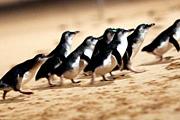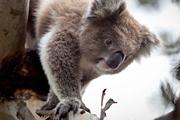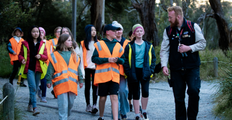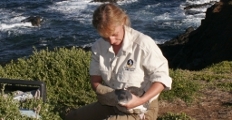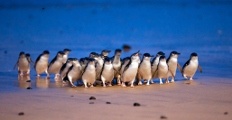From extinct to endangered: The incredible story of the Eastern barred bandicoot
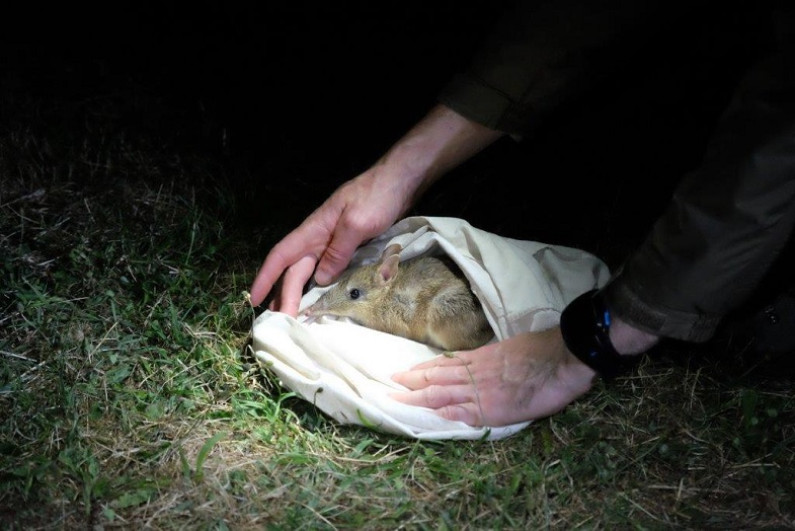
From extinct to endangered: The incredible story of the Eastern Barred Bandicoot
There are two subspecies of the adorable Eastern Barred Bandicoot, one that calls Tasmania home, and one that lives on the mainland. And until recently, the mainland Eastern Barred Bandicoot was declared extinct in the wild.
But through the hard work of some dedicated conservation teams, the mainland Eastern Barred Bandicoot is back from the brink.
Here’s a little more about this wonderful little Australian mammal - and a shortened story of how Phillip Island Nature Parks plays a big role in its recovery!
Do you want to immerse yourself in the story of the Eastern Barred Bandicoot’s recovery? We’ve designed an interactive page, full of videos and timelines, to showcase the entire story behind this outstanding conversation achievement! Click here to check it out.
The Eastern Barred Bandicoot lifestyle
The Eastern Barred Bandicoot loves woodlands and grasslands, where they come out at night to forage. They mostly eat bugs such as grasshoppers, beetles, crickets, earthworms, and moths, meaning that they are primarily insectivorous (although they are also omnivorous).
These cute creatures only live for two or three years in the wild, but they do have the fastest gestation period of any mammal at just 12.5 days, meaning they can reproduce quickly. Each litter includes one to three young.
Sadly, while they could originally be found all over South Australia and Victoria, their numbers declined rapidly due to European settlement. Most of their population loss was due to the loss of native grasslands, and because of introduced predators such as foxes.
Due to these massive losses, the Eastern Barred Bandicoot was eventually declared as extinct in the wild. However, dedicated teams set out to make a difference, and their work saved a species.
The work of the Eastern Barred Bandicoot Recovery Team
Numerous groups got together to formulate the Eastern barred bandicoot (EBB) Recovery Team who executed a plan to help save the Eastern Barred Bandicoot. This included Conservation Volunteers Australia, Department of Environment, Land, Water and Planning (DELWP), National Trust of Australia (Victoria), Parks Victoria, Phillip Island Nature Parks, the University of Melbourne, Tiverton Rothwell Partnering and Zoos Victoria.
Together, this group captured 42 Eastern Barred Bandicoots from the wild and took them into captivity with Zoos Victoria in 1988.
Thanks to these carefully created spaces without predators, the Eastern Barred Bandicoot began to see a resurgence. The Recovery Team soon started releasing the mammals back into the wild all over Victoria into various wildlife reserves and parklands.
Ten years ago, the team started searching for alternatives to fenced reserves and parklands, such as predator-free islands where the bandicoots could roam much more freely. That’s where Phillip Island came in!
Fox-free Phillip Island
In 2007, Phillip Island began a fox eradication programme. It took 10 years, but was eventually declared a success in 2017.
This was no small feat - Phillip Island actually became the largest island in the world to achieve full fox eradication, and the only one to do so with a large human population as well.
This success made Phillip Island the perfect new home for the Eastern Barred Bandicoot (and a number of other endangered and threatened species).
At first, the bandicoots were introduced to the smaller Churchill Island, which was already free of predators such as foxes and cats. They thrived here, and some even made their way across the bridge to Phillip Island!
Next, bandicoots were released onto Phillip Island on the Summerland Peninsula in 2017. Despite the population of local feral cats, the bandicoots are now doing very well living on Phillip Island.
Keeping an eye out for the Eastern Barred Bandicoot
The Eastern Barred Bandicoot are now thriving on Phillip Island around the Summerlands and Newhaven areas. You might even spot one during your visit, so make sure you know what they look like and keep an eye out! If you do see one, be sure to report your sighting.
To help continue their conservation, you can also keep an eye out on the roads - drive safely and to the speed limit to try to reduce the chance of hitting one on the street.
In 2021, the Eastern Barred Bandicoot was officially labeled as endangered, rather than extinct in the wild. There’s still plenty of work to be done, but Phillip Island is more than excited to make it happen.
Did you know that when you visit the attractions at Phillip Island Nature Parks, you're helping our conservation teams continue to keep native wildlife thriving? Plan your next trip knowing that supporting crucial conservation initiatives.
At Phillip Island Nature Parks you can:
- Watch rafts of penguins parade in from the shore
- Hang out with Koalas in the treetops
- Explore Victoria’s secret island - Churchill Island
- Immerse yourself in a virtual journey through the Antarctic
- Take a coastal cruise with thousands of seals





